Refine search
Actions for selected content:
12661 results in History of science
Copyright page
-
- Book:
- Hermann Lotze
- Published online:
- 05 June 2015
- Print publication:
- 09 June 2015, pp vi-vi
-
- Chapter
- Export citation
Appendices
-
- Book:
- Hermann Lotze
- Published online:
- 05 June 2015
- Print publication:
- 09 June 2015, pp 460-464
-
- Chapter
- Export citation
Glossary
-
- Book:
- Hermann Lotze
- Published online:
- 05 June 2015
- Print publication:
- 09 June 2015, pp xix-xxii
-
- Chapter
- Export citation
7 - Levels of Physiological Explanation (1843–1851)
- from Part Two - Emerging Bourgeois Liberalism
-
- Book:
- Hermann Lotze
- Published online:
- 05 June 2015
- Print publication:
- 09 June 2015, pp 173-201
-
- Chapter
- Export citation
Contents
-
- Book:
- Hermann Lotze
- Published online:
- 05 June 2015
- Print publication:
- 09 June 2015, pp vii-viii
-
- Chapter
- Export citation
8 - The Physical-Mental Mechanism: An Alternative to Psychophysics (1846–1852)
- from Part Two - Emerging Bourgeois Liberalism
-
- Book:
- Hermann Lotze
- Published online:
- 05 June 2015
- Print publication:
- 09 June 2015, pp 202-227
-
- Chapter
- Export citation
Part Three - The System in the Bismarck Period
-
- Book:
- Hermann Lotze
- Published online:
- 05 June 2015
- Print publication:
- 09 June 2015, pp 321-448
-
- Chapter
- Export citation
Appendices
-
- Book:
- Hermann Lotze
- Published online:
- 05 June 2015
- Print publication:
- 09 June 2015, pp 452-459
-
- Chapter
- Export citation
Postscript: Historiographic Lessons of Lotze Research
- from Part Three - The System in the Bismarck Period
-
- Book:
- Hermann Lotze
- Published online:
- 05 June 2015
- Print publication:
- 09 June 2015, pp 435-448
-
- Chapter
- Export citation
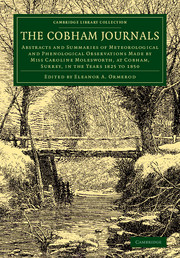
The Cobham Journals
- Abstracts and Summaries of Meteorological and Phenological Observations Made by Miss Caroline Molesworth, at Cobham, Surrey, in the Years 1825 to 1850
-
- Published online:
- 05 June 2015
- Print publication:
- 05 March 2015
- First published in:
- 1880
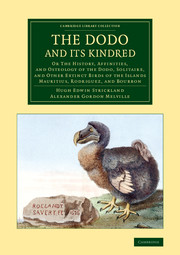
The Dodo and its Kindred
- Or The History, Affinities, and Osteology of the Dodo, Solitaire, and Other Extinct Birds of the Islands Mauritius, Rodriguez, and Bourbon
-
- Published online:
- 05 June 2015
- Print publication:
- 01 January 2015
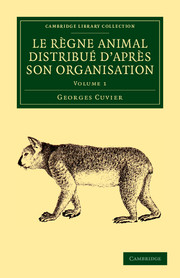
Le règne animal distribué d'après son organisation
- Pour servir de base à l'histoire naturelle des animaux et d'introduction à l'anatomie comparée
-
- Published online:
- 05 June 2015
- Print publication:
- 13 November 2012
- First published in:
- 1817
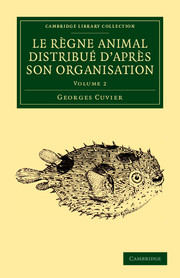
Le règne animal distribué d'après son organisation
- Pour servir de base à l'histoire naturelle des animaux et d'introduction à l'anatomie comparée
-
- Published online:
- 05 June 2015
- Print publication:
- 13 November 2012
- First published in:
- 1817
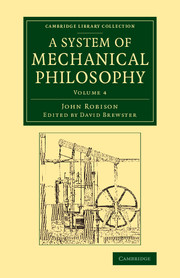
A System of Mechanical Philosophy
-
- Published online:
- 05 June 2015
- Print publication:
- 21 August 2014
- First published in:
- 1822

Cocoa
- All about It
-
- Published online:
- 05 June 2015
- Print publication:
- 13 November 2014
- First published in:
- 1892

Recherches sur les ossemens fossiles des quadrupèdes
-
- Published online:
- 05 June 2015
- Print publication:
- 12 March 2015
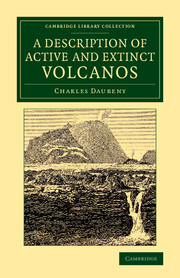
A Description of Active and Extinct Volcanos
- With Remarks on their Origin, their Chemical Phaenomena, and the Character of their Products
-
- Published online:
- 05 June 2015
- Print publication:
- 21 August 2014
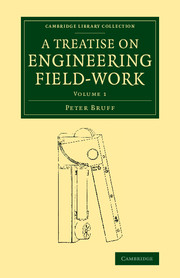
A Treatise on Engineering Field-Work
- Comprising the Practice of Surveying, Levelling, Laying Out Works, and Other Field Operations Connected with Engineering
-
- Published online:
- 05 June 2015
- Print publication:
- 21 August 2014
- First published in:
- 1840

A System of Mechanical Philosophy
-
- Published online:
- 05 June 2015
- Print publication:
- 21 August 2014
- First published in:
- 1822
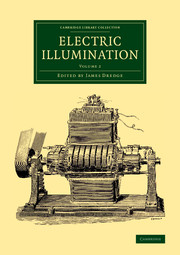
Electric Illumination
-
- Published online:
- 05 June 2015
- Print publication:
- 18 December 2014
- First published in:
- 1885
